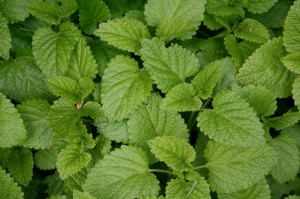
Lemon balm has a delicious sweet lemon flavour.
Tisanes or herb teas have been in vogue in southern Europe since Roman times. The fictional detective Hercule Poirot often needed a tisane after a particularly trying day. Today herb teas are increasing in popularity with the recognition of the harmful effects of too much coffee and ordinary tea. But aren’t herb teas expensive and don’t they taste awful? Not true! Especially if you grow your own, and can experiment with different combinations. Fresh or freshly dried leaves and flowers taste much better than the often musty plant material of questionable content and origin found in shops. Recent research by New York City high school students using simple DNA techniques, found that several herbal teas contain ingredients not listed on the pack. So if you grow and use your own, at least you can be certain about what you are drinking. Read more
Article and photos by Penny Woodward
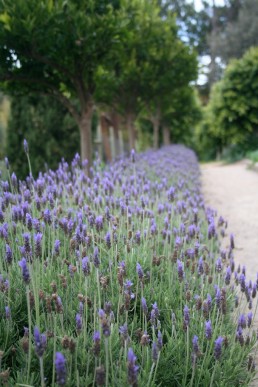
Dwarf French lavender Monet
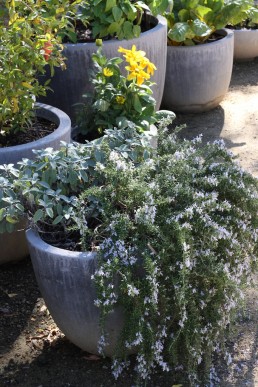
Prostrate rosemary hangs over the side
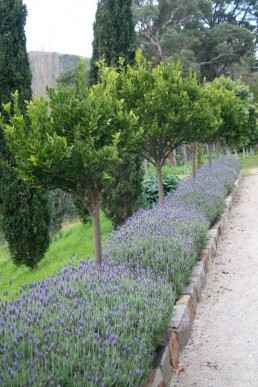
Monet lavender hedge at Diggers, Dromana
Typically mediterranean plants, lavenders and rosemaries love well-drained, sandy soils and lots of sun, but hate humidity. More are killed by overwatering or planting into heavy soils, than for any other reason. Once planted in the right position the only care needed is regular pruning. French lavenders (Lavandula dentata) are great because they flower for most of the year, have a lovely mentholy lavender scent and provide nectar for bees, butterflies and beneficial insects.
Read more
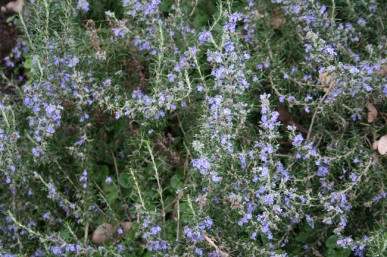
Rosemary has many medicinal uses
Rosemary (Rosmarinus officinalis), a native of the Mediterranean, is a woody shrub which can grow to a height of 1 m. It has short, tough leaves densely bunched on the stems, and pale blue flowers in winter. There are several cultivars including ‘Tuscan blue’ and ‘Blue lagoon’, which are dwarf forms with dark-blue flowers; ‘Roseus’ with pink flowers; ‘Albus’ with white flowers; ‘Aureus’, which has leaves speckled with yellow; and ‘Prostratus’, a prostrate form. Most rosemaries can be grown from seed sown in spring and all grow well from cuttings taken in spring or summer. Rosemary likes a sunny, well-drained position with a slightly alkaline soil. It can be slow growing at first, but will need to be pruned regularly after the first two years. The prostrate and dwarf varieties are excellent for rockeries or hanging baskets. Harvest rosemary whenever it is needed.
Read more





